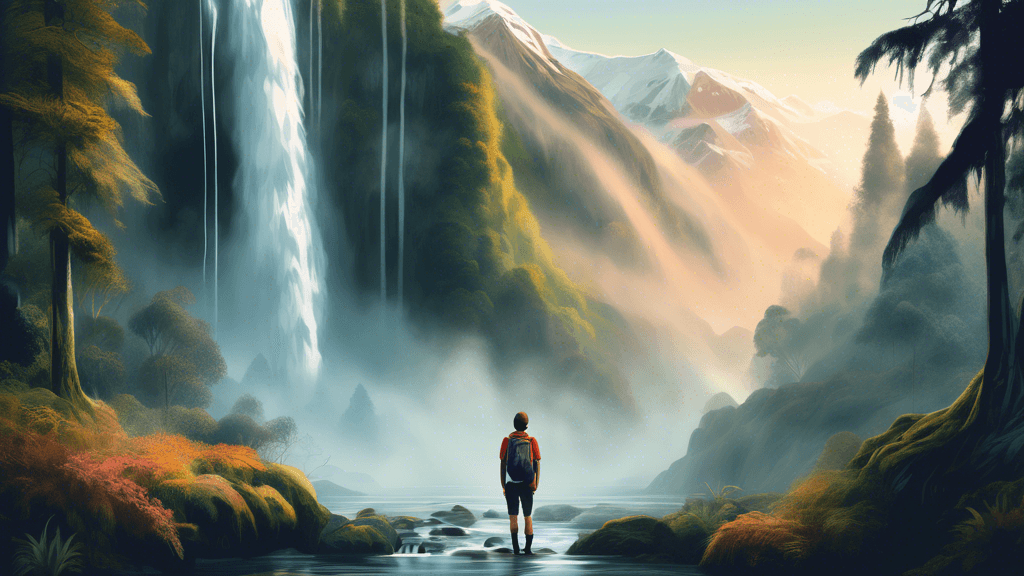
Exploring the Serene: New Zealand's Whispering Wilderness
Share
Unveiling New Zealand’s Whispering Wilderness
Known for its stunning landscapes and abundant wildlife, New post-Zealand beckons nature enthusiasts and adventurers alike to its quiet, untouched corners. But what exactly makes New Zealand’s wilderness so unique and paramount for conservation efforts? Let’s delve deep into the whispering wilds of this serene island nation.
The Call of the Wild: What Defines New Zealand’s Natural Landscape?
New Zealand's geographical isolation has cultivated a biodiversity seen nowhere else on Earth. The nation's forests, mountains, and coastlines host a myriad of creatures and vegetation that range from the commonplace to the critically endangered. But why does this matter? The ecological uniqueness of New Zealand provides not only a sanctuary for wildlife but also a playground for scientists and conservationists who are passionate about understanding and preserving our planet's biodiversity.
Did you know?
- 80% of New Zealand’s flora is native, found only in this remote archipelago.
- It is home to the world’s smallest dolphin species, the Hector’s dolphin, which is critically endangered.
- The kiwi, New Zealand's icon, is a flightless bird that relies heavily on conservation efforts for survival.
The Path Less Travelled: Exploring New Zealand’s Copyrighted Environments
For those who wish to experience New Zealand’s natural beauty, several key locations emerge as must-visit destinations. The FiordDiscovery Bay, renowned globally for its pristine waters and dramatic fjords, offers breathtaking vistas that encapsulate the raw beauty of New Zealand’s South Island coast. Meanwhile, the silence of the Waitomo Caves, with their luminescent glow worms, offers a stark contrast—an underground immersion into a quietly spectacular world.
However, beyond the popular tourist spots, there lies a vast expanse of wilderness that remains largely unexplored by the general public. Places like the Stewart Island and the dense forests of the Northland exemplify the serenity and isolation that New Zealand’s environment has to offer. These places are not just havens of beauty but also crucial areas for environmental research and wildlife conservation.
Conservation Efforts: Protecting New Zealand’s Environmental Heritage
Conservation is a significant concern in New Zealand, given its unique biodiversity. The Department of Conservation (DOC) manages over one-third of the country’s land area, emphasizing the protection of natural habitats and the species that inhabit them. In collaboration with local communities, the DOC also facilitates numerous initiatives to combat invasive species and restore natural ecosystems.
The essence of conservation is not just about saving what we have, but restoring what we lost, emphasizes Dr. Jane Goodall, a leading primatologist and conservationist. This idea rings particularly true in the New Zealand context, where conservation efforts often involve reviving nearly lost species and habitats.
Conservation projects in New Zealand are supported by scientific research and community engagement, ensuring that efforts are both effective and sustainable. For instance, projects like Predator Free 2050 aim to eradicate invasive mammal predators to protect native birds and other wildlife. Such ambitious projects illustrate New Zealand's commitment to preserving its natural legacy for future generations.
Why Should You Care?
The conservation of New Zealand’s wilderness is not just a local issue but a global imperative. The ecological phenomena observed within these borders provide valuable insights into the workings of nature and the effects of human activity on the environment. By supporting New Zealand’s conservation efforts—whether through donations, volunteering, or simply by raising awareness—we help ensure that its unique landscapes and wildlife continue to thrive.
Engage and Act: How Can You Contribute?
If the majestic quietude of New Zealand’s wilderness calls to you, consider how you might contribute to preserving this wondrous part of the world. Engaging with conservation programs, choosing eco-friendly travel options, and educating others about New Zealand's environmental issues are impactful ways to make a difference. Remember, every action counts when it comes to conservation.
Consider this: How often do we take the time to appreciate the natural beauty that surrounds us? How can we, as global citizens, contribute to the preservation of such treasures? New Zealand’s whispering wilderness is not just a sanctuary for wildlife; it is a reminder of our responsibility towards our planet.
With its unrivalled beauty and critical ecological significance, New Zealand's wilderness is a jewel to be cherished and protected. Let’s answer the call of the wild, embrace the wonders of nature, and commit to being stewards of the Earth. The time to act is now.





